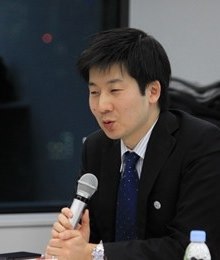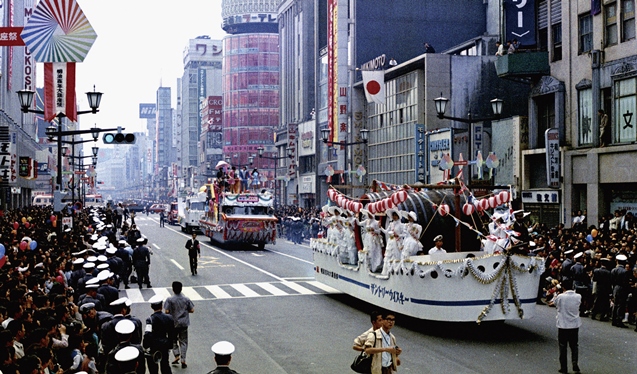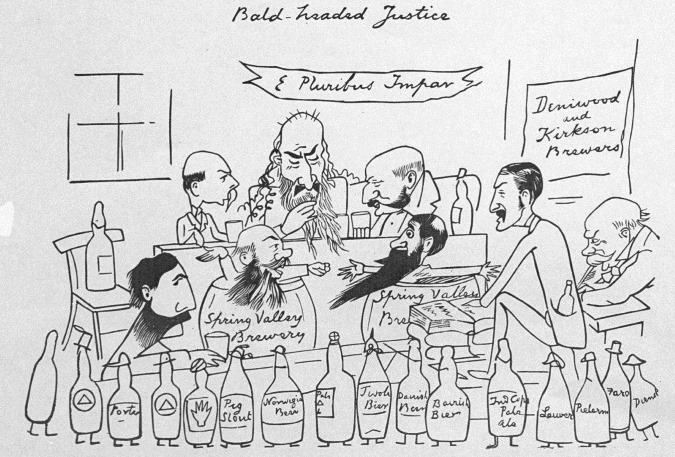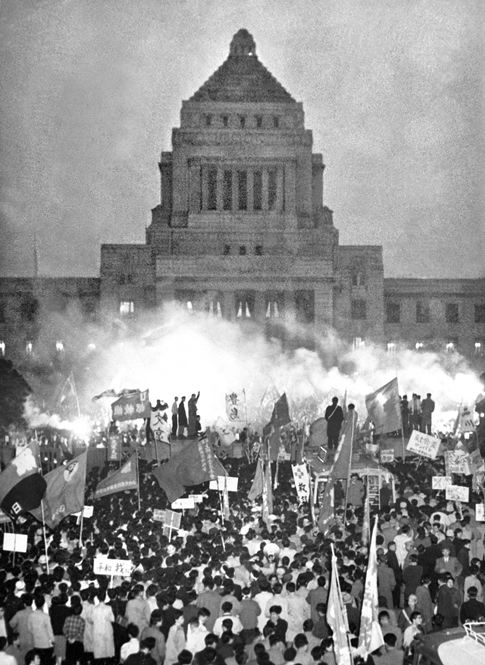- Article
- Political and Diplomatic History
Japan since the Meiji Restoration (1): Lessons from Diplomatic and Constitutional History
July 24, 2018
The articles in this series were compiled from contributions by members of the Political and Diplomatic Review project to the January 30, 2018, forum on “Japan since the Meiji Restoration,” held to reassess the 150 years since the start of Japan’s modernization. In Part 1, historian Kaoru Iokibe highlights patterns of adaptation and reaction in the diplomatic and constitutional history of modern Japan.
* * *
This year, private and public institutions around Japan are commemorating the 150th anniversary of the Meiji Restoration of 1868, an important milestone in the nation’s history. The Japanese government has even established a separate office within the Cabinet Secretariat dedicated to planning and publicizing events and programs pertaining to anniversary in collaboration with other agencies.
Today’s forum is not confined to the narrow topic of the Meiji Restoration, or to the Meiji era, for that matter. To the contrary, I see it as an opportunity to attempt a sweeping assessment of Japan’s political and diplomatic trajectory over the past 150 years.
Approaches to “Meiji 150”

There are any number of ways to approach this task. In terms of political trends, one might divide the 150-year span into five periods of roughly three decades each. The period from 1868 to sometime around the Sino-Japanese War of 1894-95 might be characterized as a time of nation building, when Japan was establishing its autonomy as a modern state. The second period, to about 1928, could be seen as a time of political maturation, during which a party system took hold and Japanese democracy reached its prewar high-water mark. The third period ended around 1958, as the postwar system took root. And the fourth, ending in 1988, was essentially shaped by the Cold War. And finally, we have the Heisei era (1989-present), which corresponds to the postーCold War era.
Of those five periods, the last may be the most difficult to pigeonhole. No doubt that is partly because we are still in the midst of it, but it may also be that the Heisei era is inherently ill-defined. In either case, I would like to use this opportunity to consider how we might best characterize the last three decades in the broader context of modern Japanese history.
This is a complex task. One issue is where to begin when speaking of modern Japanese history. To be sure, the Meiji Restoration occurred 150 years ago, but recent historiography stresses the many ways in which the Edo period (1603-1868) laid the foundation for Japan’s development as a modern nation. In fact, when I lecture on modern Japanese history, I generally start back in the sixteenth century, in the late Muromachi period. In the same way, historians have been moving away from a simplistic dichotomy between the prewar and postwar eras and placing more stress on the continuity between them. All such historical periodization is open to challenge.
I would also note that the response to the sesquicentennial, particularly from academia, has been rather muted compared with the centennial of 1968. Back then, a whole raft of studies were publishedーwith support and encouragement from the governmentーthe bulk of them seeking explanations for Japan’s extraordinary growth and progress since 1868. Since then, we’ve matured as a nation and lost much of our economic momentum, which may have something to do with the relative lack of enthusiasm this time around.

All that being said, I believe that this is an anniversary worth observing. The sesquicentennial of the Meiji Restoration has a significance beyond the number 150. This year, we have reached a point in history at which the postwar era is equal in duration to the prewar era (measured from the restoration to Japan’s declaration of war in 1941). Under the circumstances, I can think of no more fitting way to observe the Meiji sesquicentennial than to revisit the prewar era as a whole and use our insights into that period to shed new light on the successes and failures of the postwar era.
My intent is not to plunge headlong into a politically charged debate regarding the flaws of one period versus the merits of the other. Instead, I would like to search for meaningful cycles and patterns that might aid us as we navigate a course toward the future. Granted, our conclusions are bound to have political implications, but by beginning at a period fairly remote from our own lives, it seems to me that we can approach the task of identifying patterns from an objective, politically neutral perspective, returning afterward to consider the political implications.
Lessons from Three Treaties
In my effort to discern meaningful patterns over the past 150 years of Japanese history, I have focused on the key treaties and two constitutions that established the legal framework for Japan’s diplomatic and political development during that period.
In the area of diplomacy, three groups of treaties defined Japan’s relationship with the rest of the world and decisively impacted domestic politics during this period. These were the Ansei treaties signed in 1858 and other similar treaties that followed, the multilateral treaties concluded during the Washington Conference in the early 1920s, and the Japan-US Security Treaty of the postwar era. I believe that we can gain some insight into the developments of the past 150 years by exploring the dynamics surrounding Japan’s negotiation and management of these agreements.
From the Japanese viewpoint, each of these treaties represented a rational exchange of concessions in the context of the times. However, each of them also put the nation under considerable strain.
In the Ansei and related treaties, Japan made major concessions to the United States, Britain, Russia, the Netherlands, and France by accepting the jurisdiction of consular courts (set up by each country) over foreign citizens living in the newly opened cities of Tokyo and Osaka, as well as in the newly opened ports of Yokohama, Kobe, Nagasaki, Niigata, and Hakodate. At the same time, the treaties allowed Japan to keep the rest of the country closed to foreigners and foreign trade (at least in principle), buying precious time to achieve an industrial revolution and avoid Western domination.

For the fledgling Meiji government, revision of these treaties was a top diplomatic priority. However, it began by working for a partial solution, convinced that wholesale abolition of consular jurisdiction was still out of reach. In the 1870s, it entered into negotiations to open up parts of the interior in exchange for reforms designed to address the worst problems and abuses in the consular court system. The parties appeared close to an agreement when negotiations broke down.
Subsequently, the government shifted its sights higher and called for a more comprehensive exchange of concessions: Japan would open up the interior to trade and residence in return for abolishment of consular jurisdiction. This was a difficult leap to make, given the Western powers’ mistrust of Japan’s legal system at that early period. A tentative agreement was reached in 1887, but it entailed unpopular concessions: Japan would have to appoint foreign judges and prosecutors and compile a Western-style legal code, among other conditions. These terms triggered a major backlash at home in 1887, and Japan was again obliged to withdraw from the negotiations. This pattern continued to plague the government’s efforts to renegotiate the treaties.
The Washington Conference of 1921-22 was an effort to head off a naval arms race among the major Western powers and Japan. In the Washington Naval Treaty and other agreements, those powers agreed to limit the size of their navies and respect China’s sovereignty while sanctioning the status quo with regard to those countries’ privileges in China.
China, by contrast, was eager to alter that status quo. But circumstances made it difficult for China to negotiate a partial exchange. Unlike Japan, China had concluded its basic bilateral treaties in the wake of military defeats, beginning with the Opium Wars, and had thus been unable to keep the interior from being overrun by foreign interests. This set the stage for “revolutionary diplomacy,” in which the Chinese government took an all-or-nothing approach, demanding unconditional return of all concessionsーa nonstarter from Japan’s viewpoint. This state of affairs helped fuel the rise of hardline nationalistic sentiment on both sides.

In the Japan-US Security Treaty, signed in 1951, Japan granted the use of its territory for US military bases in return for a commitment to defend Japan from military aggression. The conditions governing the use of the Japanese bases were covered in a separate administrative agreement between the US and Japanese governments. In the wake of various incidents and complaints from surrounding Japanese communities, the cabinet of Prime Minister Nobusuke Kishi (1957-60) considered renegotiating the administrative agreement separately, leaving the body of the treaty intact. In the end, however, it set its sights higher and undertook to renegotiate the treaty as a whole, bringing back the revision of the administrative agreement to the agenda. This complicated matters for the United States, since the Department of State and the military had contrasting interests and priorities. Even so, the Americans reviewed all the possibilities and showed themselves fairly flexible in accommodating Japan’s escalating demands.
Ultimately, the Kishi cabinet succeeded in its ambitious effort to revise the treaty, which acquired greater legitimacy as a result. In the meantime, however, the revision issue had become a lightning rod for political dissent, and the massive protests it inspired forced Kishi to resign.
One pattern we can discern in all three of these examples is the failure of politicians to limit the scope of a diplomatic issue. In each case, this opened the door for opposition forces to take advantage of an escalating nationalist backlash. The government needs to learn from these examples in managing the Japan-US Security Treaty going forward.
Pitfalls of the Meiji Constitution
Let us now shift our focus to the development of constitutional government in prewar and postwar Japan. Although drafted under very different historical circumstances, the prewar and postwar constitutions share a fundamental characteristic, as we shall see.
The Constitution of the Empire of Japan, commonly known as the Meiji Constitution, was promulgated in 1889. After studying the constitutions of various Western countries, the drafters modeled Japan’s first constitution after that of Prussia and other German states, which emphasized the sovereign power of the monarch.
It is important to note, however, that Japan’s political parties were already well-developed by the 1880s, even before the promulgation of the Meiji Constitution or the establishment of the Imperial Diet in 1890. The parties conceived of a constitution as something malleable that political leaders could reshape as they governed, and the Rikken Kaishinto called for a British-style parliamentary cabinet under a constitutional monarchy.
The constitution drafted under the leadership of Hirobumi Ito reflected the strongly monarchist ideas of Ito and other Meiji oligarchs, but it embraced aspects of the British system as a concession to the liberal opposition (the Freedom and People’s Rights Movement). The House of Representatives was given de facto veto power over the budget, and this made it increasingly difficult to resist the tide of party politics. Over the next 20 years, several noted Meiji oligarchs jumped on the bandwagon, including Ito himself and Taro Katsura, and this helped to create a functioning two-party system in the 1920s. The concept of the emperor as merely the highest “organ of the state” (set forth by constitutional scholar Tatsukichi Minobe in 1912) was widely accepted during this time.
However, because the democratic components of this hybrid system were never explicitly defined or guaranteed by the Meiji Constitution, they were easily undermined. Crises like the depression of the 1930s and the military’s invasion of Manchuria cast doubt on the parties’ capacity to govern. When the opponents of party government attacked Minobe’s theory of the emperor as an organ of the state, they could convincingly claim the mantle of originalists faithful to the text of the Meiji Constitution.
Perils of Overreaction
How do these developments bear on the postwar Constitution of Japan, enacted in 1946 under the US Occupation?
Like the Meiji Constitution, the postwar Constitution is a hybrid. It established a parliamentary democracy in the British mold. At the same time, it incorporated aspects of the US system. Most notably, it limited the cabinet’s power to control the legislature’s daily agenda and gave unusually strong powers to the second chamber of the bicameral legislature (the House of Councillors). This proved uncongenial to the government’s efforts to get legislation through the Diet in a timely and efficient manner.
As the dominant party in the Diet after 1955, the Liberal Democratic Party developed a system for greasing the wheels of this cumbersome legislative machine. By hammering out the details of legislation among interested LDP Diet members in advance, the party could more or less secure the bill’s smooth enactment once it was formally submitted to the Diet. A bill drafted within a particular ministry would be submitted to the corresponding division of the LDP’s Policy Research Council. These politicians ( zoku giin ) were also in close communication with powerful lobbies capable of ensuring their reelection, and they helped iron out differences between the bureaucrats and the representatives of Japanese industry and other interests. This machine, inextricably tied to a single party, allowed the LDP to remain in power for about four decades. During the Cold War, this political stability helped Japan maintain its status as a member of the Western bloc and contributed greatly to its economic growth.
In the 1990s, however, as the Cold War ended, the nation introduced electoral reforms aimed at bringing Japan’s parliamentary system into line with the original goals of the Constitution. It was argued that the postwar electoral system, with its three-to-five-seat electoral districts, had encouraged the proliferation of small parties in the House of Representatives while fostering intense factional competition and money politics within the LDP. The reforms, which came into effect with the 1996 general election, replaced the “medium-sized” electoral districts with single-seat ones, albeit in combination with a proportional-representation component. These and other reforms were aimed at creating a two-party system by centralizing the ruling party’s internal command structure while encouraging consolidation of the opposition parties into a force capable of challenging the LDP.
In 2009, the Democratic Party of Japan was finally able to oust the LDP and seize the reins of government, but its victory was short-lived. A newly centralized LDP returned to power three years later, after the DPJ proved unequal to the task of governing. Now, the LDP appears to be over-adapting to the new system. Excessively anxious about the effect of national policies on local races, the government keeps promising handouts while deferring the fiscal retrenchment so urgently needed. Then, once the threat of a voter backlash has receded, it goes back to high-handedly prioritizing its own agenda.
With the DPJ in disarray, meanwhile, the proportional-representation component of the electoral system has allowed small parties to survive and proliferate. As a result, the opposition forces are hopelessly fragmented, competing with each other in single-seat-district races, and incapable of providing a much-needed check on the LDP.
In the years since World War II, as in the period before, the hybrid nature of Japan’s constitutional framework has inevitably created gaps between the letter of the law and its application. This has enabled the system to respond flexibly to the tide of the times and doubtless abetted the evolution of Japan’s democracy and the country’s rapid economic growth over the past 150 years. But it has also made the system difficult to understand and vulnerable to charges that it is not faithful to the spirit of the Constitution and the will of the people.
Under both the prewar and postwar constitutions, this drift engendered a backlash about 40 years later, as reformers sought a return to original principles. Fundamentalism, though, can be dangerous, even if the ideals it advocates are basically sound, since it insists on rigid application of principles at the expense of balance and caution.
Translated from "Meiji 150-nen o tenbo suru: Rekishi no kyokun o gendai ni tsunagu," https://www.tkfd.or.jp/research/detail.php?id=103 , and "Kihon joyaku to kenpo kara 150-nen o kataru, https://www.tkfd.or.jp/research/detail.php?id=106

